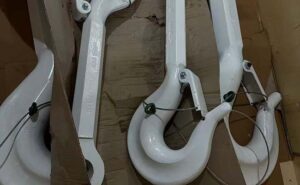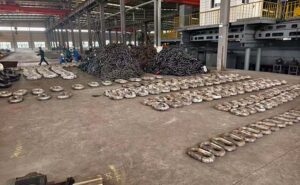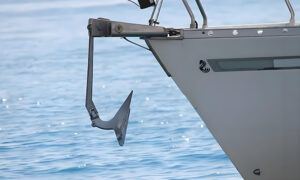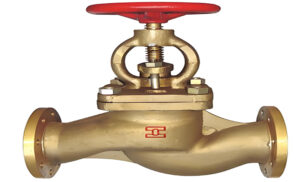Marine propellers are the core devices in the marine system, and they determine whether ships can continue to navigate on the sea. The existence of them ensures the security of ships and passengers indirectly. So, to all the ship owners, learning about boat propellers and understanding how to choose an appropriate one is the top mission of maritime operations. Some relevant introductions about these questions are as follows:
What Is A Marine Propeller?

The marine propeller is a kind of propulsion device. It can create driving forces through rotating blades and push the ship forward. It can be a fixed paddle or a rotatable paddle. Also, its requirements in different waters, sailing speed, and propulsion efficiency are different. Marine props are usually composed of blades, shafts, turbines, bearings, reducers, and mounting brackets.
Basic Types of Marine Propellers

In the field of marine industry, the marine propeller, as a propulsion device, controls the smooth operation of ships in the marine environment. The following are some common types of marine propellers for sale, which have their own characteristics and applicable conditions.
Fixed pitch propeller (FPP)
Fixed pitch propeller means the blade angle is fixed, so it is necessary to reverse the engine or clutch. It is simple in structure, low in cost, and durable, and is suitable for ships with low maneuverability requirements.
Controllable pitch propeller (CPP)
The blade angle can be adjusted dynamically, and the engine can move forward, backward, or change speed without changing the steering direction. This design can efficiently use the power of the main engine and improve the maneuverability of the ship. It is often used in tugboats, warships, and other ships that need frequent adjustment of working conditions.
Double-blade propeller
The design of the double-blade propeller is relatively simple, which can provide stable thrust under various working conditions and has high propulsion efficiency, but it often has large vibration and noise, so it is suitable for small and medium-sized ships. Because of the shortcomings of structural stability and balance of thrust distribution, the twin-blade propeller is rarely used by merchant ships.
Three-blade propeller
The three-blade propeller has fewer blades, less resistance, and higher efficiency at medium speed. In addition, it has a simple structure, convenient maintenance, and low cost. Therefore, in medium-sized, ocean-going ships and inland river ships, the three-blade propeller usually occupies a dominant position, and its design can improve thrust and reduce noise and vibration at the same time.
Multi-blade propeller
Five-blade propellers or more are often used in large ships and submarines. This design can provide greater thrust, but it is usually accompanied by higher manufacturing costs.
Material Selection of Marine Propellers

The choice of these materials is prominently based on their physical and chemical properties. These features can guarantee that marine propellers work normally in complex marine circumstances and possess longer lifespans.
Cast steel: Boat propeller made of cast steel has high strength and corrosion resistance, and is suitable for all kinds of ships, especially large ocean-going ships.
Aluminum alloy: A propeller made of aluminum alloy is lightweight with good corrosion resistance, and is suitable for ships that need to reduce weight and improve fuel efficiency.
Copper alloy: Propeller made of copper alloy is usually used to manufacture ship propellers, which have good corrosion resistance and high strength.
Nickel-aluminum bronze alloy: Propeller made of this alloy is often used in ocean-going ships, which has good corrosion resistance and strength and is suitable for working underwater for a long time.
Factors to Be Considered in Selecting A Marine Propeller
Finding a suitable propeller for your ship is the key to ensuring its safe and stable operation in the ocean field. However, in order to choose the best one among all kinds of marine propellers for sale, you need to consider the following questions and use these answers to screen marine props.
Hull length and weight: Hull length and weight have a great influence on the selection of propeller size. Generally speaking, the longer the hull, the larger the diameter of the propeller is needed. At the same time, the weight of the hull will also affect the choice of the propeller, and the greater the weight, the greater the power of the propeller.
Engine power and speed: Engine power and speed are also important factors affecting propeller size selection. Usually, the larger the power, the larger the diameter and pitch of the propeller, and the higher the speed, the faster the propeller speed.
Driving waters and purposes: Different driving waters and purposes also have an impact on propeller selection. For example, driving in deep water requires a long-bladed propeller, while driving in shallow water requires a lobular propeller. At the same time, if it is used for fishing or tourism purposes, it is necessary to choose a more stable and low-noise propeller.






